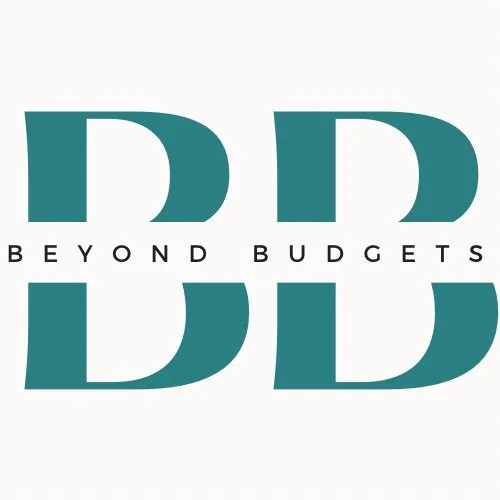Investing Order of Operations
Ever wonder what the best order for your investments is? Maybe you’ve figured up how much you have available to invest and now need to know where you should put those dollars. I got you.
Disclaimer: Every situation is different, so if you have hired a certified financial planner, be sure to consult him or her for your situation. But generally speaking, here’s the best investing order of operations in most common situations, and why.
First thing’s first. Start off by calculating how much you can invest in a full year. For example, my family can invest about $30K per year based on my salary, my husband’s salary, and our expenses.
Think of each investment vehicle listed below as a bucket, and they’re all lined up in order. The amount that you can invest in a single year is represented by water in this analogy, and you’re filling each bucket in order. Once that first bucket is full, move to the next, and so on until you’re either out of water or out of buckets.
1. 401K to the match percentage
2. HSA to the max annual
3. ROTH IRA to the max annual
4. 401K (Traditional) to the max annual
5. Additional brokerage account
Why is this the best order for your investments?
401K to the match - This is first because an employer match is free money. If offered it’s part of your employer compensation, so don’t just take advantage of it — PRIORITIZE it.
My employer offers a 5% match so I know without a doubt that I’ll contribute at least 5% of my salary to my 401K each year. To double that portion of my investment.
HSA to the max - this is second priority because this fund is triple tax advantaged, as we’ve covered. These funds are invested pre-tax, the growth is tax-free, and the withdrawals are tax-free (as long as they’re spent on qualifying medical expenses).
2024’s HSA family maximum is $8,300, so I invest $690 per month here. This is automatically withdrawn from my paycheck before tax, so it’s out of sight and out of mind.
ROTH IRA - This account is the next bucket to fill because withdrawals are tax advantaged and there’s a lower limit than a 401K traditional IRA.
2024’s ROTH IRA maximum is $7,000 for individuals younger than 50 years old, so I invest $583.33 per month here. We do this twice in my household since we each have ROTH IRAs, so the total monthly amount is about $1167.
If you’re over 50, the IRS allows you to contribute an extra $1,000 per year to a ROTH, so the monthly amount for this age group is $667 per individual.
Traditional IRA (via employer 401K) - This type of investment is purchased pre-tax but the growth is taxed. Meaning that when the fund is withdrawn from at retirement, you will pay taxes on what you withdraw, just like you’d pay taxes on a paycheck. Remaining “water” goes here until the total max is reached.
The annual 401K maximum for 2024 is $23,000 if you’re under 50 and $30,500 if you’re 50 or better. **Be sure to deduct that match percentage you invested first so you aren’t penalized by mistake.**
This is the bucket where I personally run out of water. But if you still have some leftover after filling all those buckets, you can invest through a normal brokerage account. Vanguard and Fidelity are my personal favorites.
Other Info
There are income limits for ROTH IRAs, so beware. If you make more than $161,000 as a single filer or $240,000 as a married couple, you cannot contribute to a ROTH IRA, so you’ll need to explore what’s called a back door roth instead.
And there you have it. Whether you’re filling up all buckets or barely filling the first, prioritizing investing will put you on track for a more comfortable future. Don’t put off investing just because you can’t fill all the buckets. Do what you can in the right order. We’re dreaming big and starting small, and you can do it!


